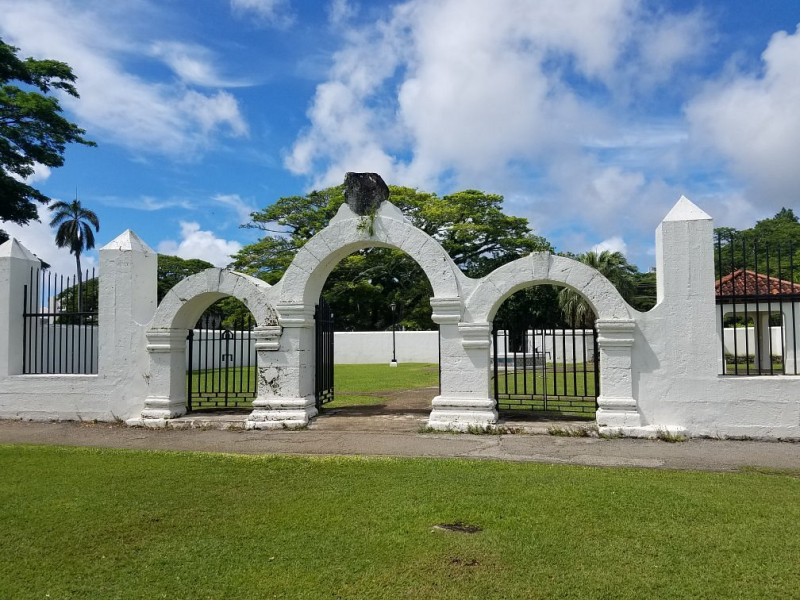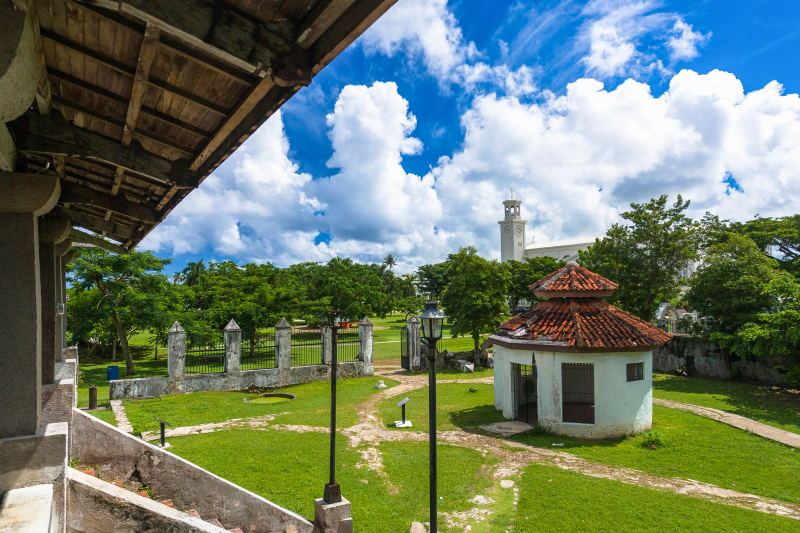Plaza de España
During the long Spanish occupation of the island, the Governor's Palace was located in the Plaza de España (Spain Square). During the reconquest of Guam in World War II, the majority of the palace was damaged by shelling. The three-arch gate to Almacen (Arsenal), the azotea or back porch, and the Chocolate House are the only structures left surviving. In 1974, the plaza was added to the National Register of Historic Places.
The Plaza de Magalhães (Governor's Plaza) was the initial name of the complex, which was eventually changed to Plaza de España. Its appearance has also evolved over time. Governor Don Enrique Solano renovated the previous palace with a new structure in 1885. When Guam became an American property after the Spanish–American War in 1898, the Plaza became the American administration's headquarters and the official residence of the Naval Governor.
The shelling of Hagta during the retaking of Guam in World War II damaged the majority of the palace. The following historical structures from the Plaza de Espana have survived until the twenty-first century: the Garden House, the Chocolate House, the Azotea and inner court which are the only visible structures remaining of the Spanish palace. The historic entrance to the palace storage, which eventually became an armory, is still visible, as are portions of the original flooring. The remnants of the fortifications built under Governor Muro's rule are still visible, including the nine-foot walls behind the Azotea and the low walls behind the Plaza de Espaa ruins.
Location: Hagåtña








